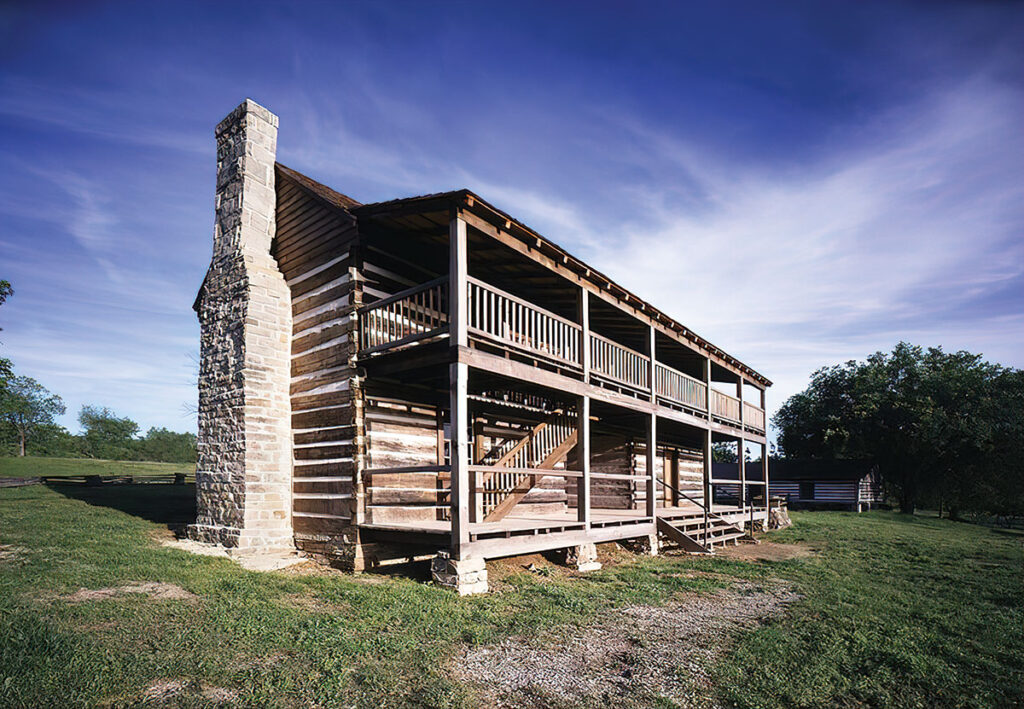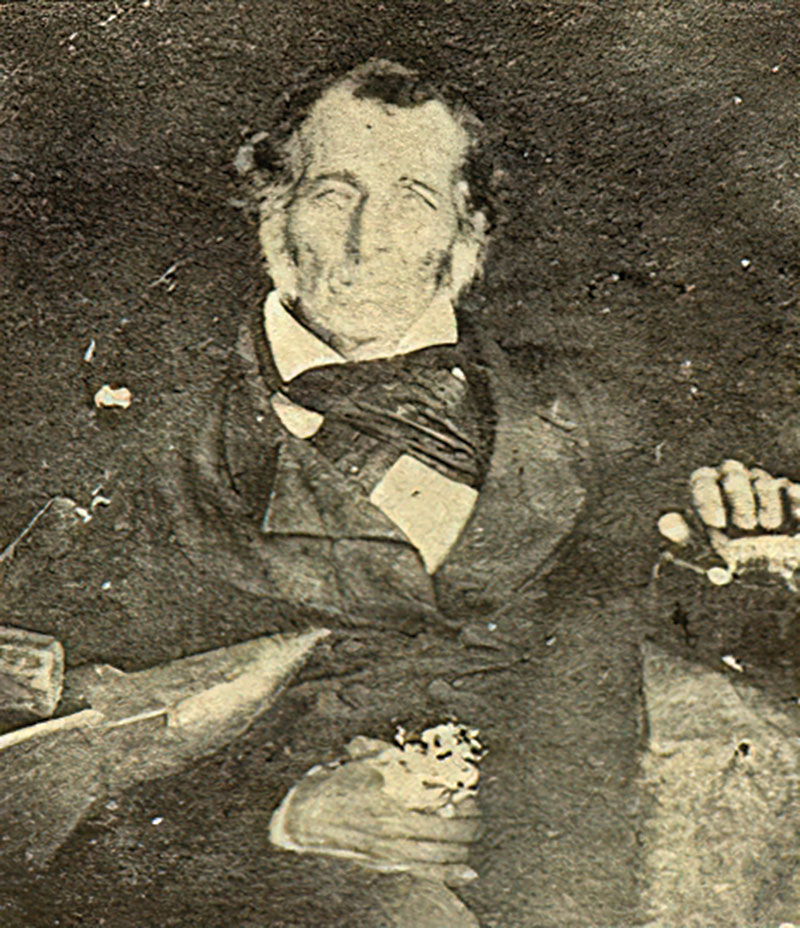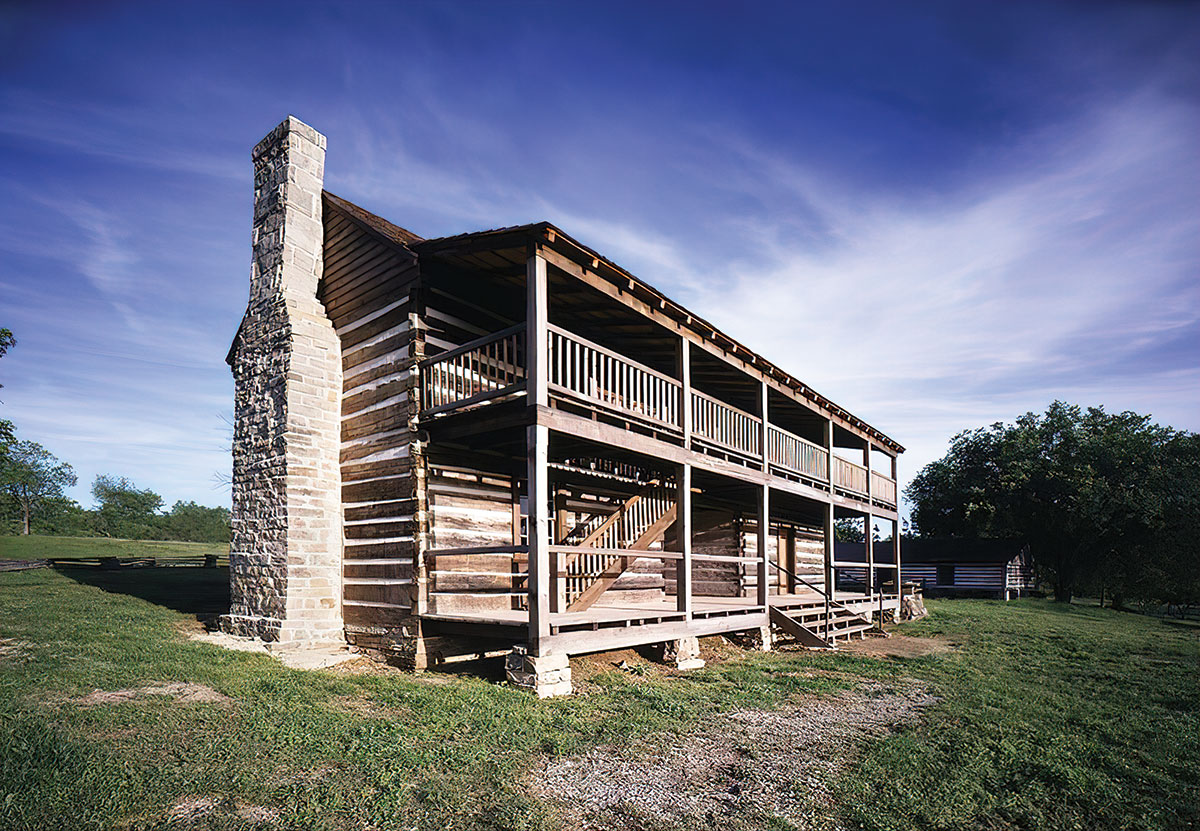
Restorations of the historic Jacob Wolf House near completion
For nearly 200 years, the Jacob Wolf House has stood as a witness to history. It’s only been in the last few years, however, that the true story of Jacob Wolf and his home has been shared with visitors – giving new life to history in the Ozarks.
The Jacob Wolf House is listed on the National Registry of Historic Places and served as the first courthouse of then-Izard County, Ark. It is the last two-story, dog-trot public structure in the United States. It is now being developed as the state of Arkansas’s newest historic site.
The property, which became a part of Baxter County, Ark., in 1873, was acquired by the Division of Arkansas Heritage five years ago from the Baxter County Quorum Court, which had taken the site over from the city of Norfolk. Before the state took ownership, there were two restorations, one in the 1960s and the other in 1999.
The most recent phase of restoration, which is nearing completion, includes a new shake single roof, new shutters, and various repairs to the Jacob Wolf House, as well as to the 1832 John Wolf Cabin, built by Jacob Wolf’s brother and moved to the site in the 1990s.

“Approximately 200 years ago, this was a thriving, upstart community where the North Fork River joins the White River known as Liberty, a name our namesake coined. This all didn’t come out by happenstance; it was well planned. Liberty was a source of trade, commerce and politics. At that time, river ways were the primary means of transportation. Jacob Wolf was instrumental in moving the frontier community forward.”
Liberty was originally about 76 acres in size, but the site is only about 2 acres today.
Marlon described Jacob Wolf as an “astute” businessman. Born in North Carolina, Wolf and his family moved to North Central Arkansas around 1820 and built their first home in 1824 or 1825. Jacob Wolf was elected to the Arkansas General Assembly in 1826 and received approval from the legislative body in Little Rock to build the first territorial courthouse in Izard County. A master blacksmith, a merchant, the operator of two ferries, a farmer, the local postmaster and a Southern Baptist minter, Wolf built the structure in 1829. It remained the courthouse for Izard County until 1835. Ownership reverted to Jacob Wolf when the center of government was moved, and the structure became the Wolf family home. It is the last remaining building from the early days of Liberty.
Interpretive themes at the site are river travel, trade, the culture of the Native American tribes in the region, territorial politics, early statehood, the Civil War, and slavery in the Ozarks.
“Slavery is not well known in mountainous regions,” Marlon said. “We don’t interpret battles; we interpret how the war impacted the common hill folk with two competing forces vying for control of the landscape and how that affected their daily lives.”
The house escaped being destroyed in the Civil War.
“It was common practice to burn structures down so the enemy couldn’t use them,” Marlon said. “In April 1962, Gen. Samuel R. Curtis (a Union general) had troops east of here, and he gave orders to scour the river valley, retain and bring back any and all things that could further their campaign; that brought them to the Wolf House. They seized Jacob Wolf’s ferry crossings and took siege of the Wolf House for temporary quarters.
“Jacob Wolf and his family were strong Confederate supporters. The house was gutted of anything, including firearms, and Jacob Wolf, being 77 years old, tried to fight them off with his cane. For that act of insurrection, if you will, he was imprisoned at Union-held Batesville.”
He was released in October 1862, but Wolf’s health quickly declined, and he died at home on Jan. 1, 1863.
Partnering with the Arkansas Archaeological Survey, the area around and below the Wolf house has uncovered some artifacts dating much older than the former town.
“When the first major restoration took place, it allowed anthologists to survey under and around the house for the first time,” Marlon explained. “Within the first 10 to 15 centimeters under the house, they found evidence of large caches of pre-·his·tor·ic, Native American chert stone, pieces of arrowheads, scrapers and things of that nature. Some of the artifacts date back approximately 7,500 years.”
Items found at the site are curated at the Arkansas Archaeological Society facility in Fayetteville. The site is protected by law, and visitors may not conduct ground surface or metal detector hunts.
As the layers of history are being pulled back at the Jacob Wolf House site, more stories are being discovered.
The site is finishing the certification process with the National Park Service – National Trails Office to be recognized as an official Cherokee Trail of Tears interpretive site. The Benge Route: Benge Detachment passed through Liberty in December 1838 and January 1839.
“The Wolf House is documented as a witness house, one of only three in Arkansas today that witnessed the Trail of Tears Removal,” Marlon said.
Renovations of the Jacob Wolf House are expected to be completed by July, allowing the public to walk the halls of history once again and see where history was made.
“Some significant events of history were exposed here. This is one of the smallest properties in our state inventory, but it is one of the most significant that speaks to territorial Arkansas.”







